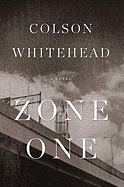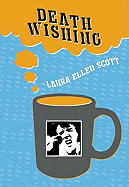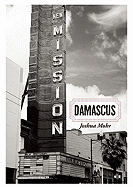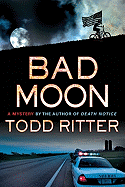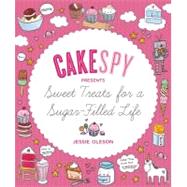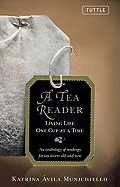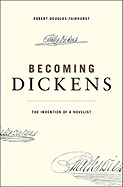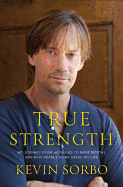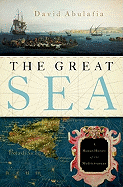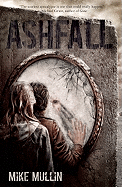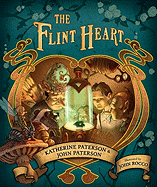Friday, October 21, 2011
There was a lot of anticipation at Shelf Awareness about the embargoed copy of Sweetness: The Enigmatic Life of Walter Payton by Jeff Pearlman (Gotham). Chicago Bears running back Payton is considered by some to be the greatest football player ever--and by most as one of the greatest. He was respected both as a player and a person, he was an inspiration to many, and he died far too young at the age of 45. Unfortunately most of the pre-publication press focused on the parts of the book about Payton's depression, suicidal thoughts, philandering and addiction to painkillers.
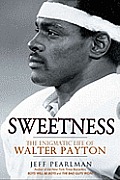 What has been ignored is the entire book--a thoughtful, profound, respectful story of a larger-than-life man. It's a story of segregation, integration, strong family and a cast of memorable people. Even more, it's a cautionary tale of what football can do to a player, especially a player who would rather take a hit than run out of bounds. Painkiller addiction? The more surprising story would be no need for drugs. Anyone who has read North Dallas Forty, written by the late Peter Gent in 1973, knows about the pain that wracks an athlete's body. Lately, there have been books focused on concussions and their effects--The Concussion Crisis by Linda Carroll and David Rosner (Simon & Schuster) and Throwaway Players by Gay Culverhouse (Behler Publications)--and who's to say, given the medical evidence, that Payton's depression wasn't linked to his pummeling?
What has been ignored is the entire book--a thoughtful, profound, respectful story of a larger-than-life man. It's a story of segregation, integration, strong family and a cast of memorable people. Even more, it's a cautionary tale of what football can do to a player, especially a player who would rather take a hit than run out of bounds. Painkiller addiction? The more surprising story would be no need for drugs. Anyone who has read North Dallas Forty, written by the late Peter Gent in 1973, knows about the pain that wracks an athlete's body. Lately, there have been books focused on concussions and their effects--The Concussion Crisis by Linda Carroll and David Rosner (Simon & Schuster) and Throwaway Players by Gay Culverhouse (Behler Publications)--and who's to say, given the medical evidence, that Payton's depression wasn't linked to his pummeling?
After Mike Ditka asked about the point of Sweetness's revelations, Scott Simon, on NPR Weekend Edition, said, "I don't know if the book has a point. But it might serve a purpose." That purpose would be to ask ourselves what kind of entertainment is a game that maims and cripples its players.
Jeff Pearlman has written an exceptional book, whose worth should not be obscured by the sensationalism of one part of Walter Payton's exceptional life. --Marilyn Dahl
Zone One
by Colson Whitehead
The word "zombie" never appears in Colson Whitehead's (Sag Harbor) post-apocalyptic story of a world decimated by a plague that turns humans into flesh-eating monsters. But the groaning, staggering, ravenous creatures that haunt the novel are unmistakably zombies, and Zone One is an unmistakable contribution to an increasingly popular horror subgenre. With characteristic thought and wit, Whitehead elevates the familiar tropes and presents a novel about survival, reformation and the emblematic chaos of modern New York City.
The worst of the plague is over. A provisional government has formed, and volunteers are preparing the city for resettlement. Our antihero, nicknamed Mark Spitz, is part of a team assigned to clear Lower Manhattan ("Zone One"), and the story follows him over three increasingly uneasy days as he hunts for the plague's leftovers and disposes of their remains. It's a grim job, but all the gruesome descriptions and chilling flashbacks are infused with darkly comic ruminations: "Manhattan was empty except for soldiers and legions of the damned," Mark notes as military officers claim homes in the ruined city, "and already gentrification had resumed."
Whitehead is not so heavy handed as to draw an explicit connection between his zombie apocalypse and 9/11, but it's an easy analogy to make: The Lower Manhattan setting, the empty slogans and songs spurred by the reconstruction, the ring of familiarity between "Zone One" and "Ground Zero." But Zone One is about more than zombies, and more than 9/11. It's a portrait of modern civilization--and how devastatingly fragile it is. --Hannah Calkins, Unpunished Vice
Discover: Colson Whitehead's admirably clever, darkly funny and truly terrifying foray into zombie horror fiction.
Death Wishing
by Laura Ellen Scott
Imagine a world in which you had the power to make a wish that would be granted right after you died. Set aside the fact that you would never live to enjoy your wish: What kind of legacy would you leave behind?
This is the premise of Laura Ellen Scott's Death Wishing. However, rather than wishing for peace on Earth or an end to hunger, the recently deceased have made wishes for orange clouds, the return of Elvis and everlasting cups of coffee. One man even (spitefully, one would imagine) wished for the instant disappearance of every cat on the planet.
Scott has conjured up an intriguing, original concept and plunked the story down in post-Katrina New Orleans; the addition of orange clouds, while intriguing, isn't even necessary to set the mysterious, otherworldly mood she so deftly creates. While some ramifications of the phenomenon of "death wishing" are examined--the murder rate quickly skyrockets, then plummets, when people realize that you can't force a self-serving wish out of someone when you're going to kill them anyway--it's Scott's brilliant job of eliciting sympathy for the creepy narrator, Victor (a divorcé who lusts after his adult son's girlfriend), that makes her debut novel truly magical. Despite all the weirdness, Victor's concern and loyalty to his loved ones during uncertain times shine as brightly as the hair on the revived Elvis in this oddly endearing tale. --Natalie Papailiou, author of blog MILF: Mother I'd Like to Friend
Discover: A world in which your deepest wish comes true--you just have to die first.
Damascus
by Joshua Mohr
Seeking information about Joshua Mohr online yields a great deal of results referencing Charles Bukowski, a comparison that, while only glancingly accurate in his previous work, will no doubt be cemented by Damascus, a great deal of which is set in and around a seedy bar of the same name in San Francisco. Damascus is a classic dive bar, populated by a cast of characters in various stages of inebriation, illness and malcontent-ment. Owen, the owner, has found that the key to his own happiness lies in wearing a Santa Claus disguise, nicely hiding a birthmark on his upper lip that strongly resembles a famous mustache of an especially detested and well-known historical figure. (Revv, the other bartender, salutes and mouths "Sieg Heil!" to the amusement of customers. Owen is too depressed to address it.)
Some customers are exhausted by their attempts to reinvent themselves, and others struggle to stay ahead of a circumstantially-forced reinvention that could crush them. Mohr's writing in Damascus works winningly when unravelling the relationships of these possibly hopeless inebriates, as their shared orbit around the bar pulls and pushes on their downward trajectories--not necessarily reversing the course, but maybe granting some meaning and relief. Some of the humorous touches may remind readers of the prose of Bukowski, but where he would have shined the spotlight on their drunken stupor, Mohr reveals a more thoughtful, existential consideration of who these people are. If his work continues in this vein, we may one day instead see Bukowski being compared with Mohr. --Matthew Tiffany, counselor, writer for Condalmo
Discover: An unsentimental but thoughtful account of an end-of-the-line bar, where patrons go to wait for their lives to end--and to start.
Mystery & Thriller
Bad Moon
by Todd Ritter
Bad Moon begins on the night of July 22, 1969: as Neil Armstrong walks on the moon, in the town of Perry Hollow, nine-year-old Charlie Olmstead goes missing, and the only thing left behind is a bike found just above the town waterfall. Forty years later, police chief Kat Campbell (introduced in Ritter's Death Notice) picks up the case her father didn't solve--at first to help an old friend, then an old flame, then to find justice for all the missing boys who have disappeared in the same way.
Charlie's surviving brother, Eric Olmstead, now a successful mystery writer, returns to Perry Hollow to oversee his mother's funeral. Her dying wish to her son was to "find Charlie," and that’s why he's hired Nick Donnelly, a former cop and a friend of Kat who runs a private investigation firm that specializes in cold cases like this one. Eric and Kat dated in high school and start to rekindle that flame when Nick involves her in the Charlie Olmstead case. Kat tries to reconcile her reawakening feelings with her guilt over not spending enough time with her Down's syndrome son, James, who is the same age as the missing boys. The plot rockets through its requisite twists and turns at a breakneck pace, leaving clues in its turbulent wake.
Bad Moon is a compelling, easy read with surprising depth and humor and dialogue that never creaks or groans awkwardly. Readers will thrill to discover the truth behind the moon landing abductions and will root for Kat, Eric, Nick and James as they interact with a host of well-drawn secondary characters and suspects. --Rob LeFebvre, freelance writer and editor
Discover: Ritter's second novel is a compelling, well-written mystery with complex plot and pacing.
The Potter's Field
by Andrea Camilleri, transl. by Stephen Sartarelli
Comparisons between Andrea Camilleri and Donna Leon are perhaps inevitable. Both have written a successful set of atmospheric mysteries starring introspective Italian detectives. But Camilleri's Inspector Montalbano is the antithesis of Leon's thoughtful and tidy Commissario Brunetti. Montalbano is gruff, abrupt, profane and haphazard. Worried about aging, he spends much of the book talking to himself, trying to adjust to his reduced agility and delayed reactions.
Montalbano works in Sicily, where, when a dead body turns up, it's practically de rigueur to find links to the Mafia. Indeed, when body parts turn up in a field of clay, Montalbano sees references to Mafia traditions in the manner of dismemberment. He isn't particularly flustered by the case, assuming that it will take a while to identify the victim. What bothers him more is the strange behavior of Inspector Augello. For no explicable reason, Augello is angry and argumentative and is creating tension within the department.
Avoiding the touchy Augello, Montalbano and Officer Fazio work together to discover who the dead person is. Before they can make a positive identification, they are distracted by the arrival of a beautiful Colombian woman, worried that her husband has been lost at sea.
Camilleri adeptly weaves all these separate strands--Augello's anger, the mutilated body from the potter's field, the Colombian's missing husband--into an absorbing mystery that will take Montalbano to the Italian mainland and back in an attempt to find the truth. --Jessica Howard, blogger
Discover: A dead body with Mafia ties--not unheard of in Sicily--but Inspector Montalbano will be surprised by this case.
Food & Wine
CakeSpy Presents Sweet Treats for a Sugar Filled Life
by Jessie Oleson
Jessie Oleson has turned her CakeSpy blog into an adorable cookbook full of delectable treats. Using her "dessert detective" skills to their maximum, she creates mind-blowing combinations of sugary goodness.
CakeSpy contains recipes for homemade versions of commonly store-bought things like toaster pastries, as well as recipes that use sweet items to re-create other foods, like the "eggs benedict" made of doughnuts, brownies, frosting and Cadbury crème eggs. It also has recipes for popular regional dessert specialties such as Velveeta Fudge and Nanaimo Bars. The most impressive recipes, however, are the ones that combine two or more types of dessert in unexpected ways. Doughnut Upside Down Cake? S'moreos? Glazed Cinnamon Rolls Stuffed with Chocolate Chip Cookie Dough? CakeSpy has all of these and more.
Oleson's cookbook features colorful photos and the margins are full of her drawings of cupcakes, unicorns, cookies and robots. Oleson also offers a short introduction for each recipe, explaining, for example, how she came up with the idea of offering comical advice such as "put your fat pants on." The directions are clear and specific, even for the most complicated creations. (Ingredients like store-bought cookie dough make it a cinch to whip up a batch of goodies.) But be warned: You won't be able to make just one CakeSpy sweet treat, because these recipes are that good--in fact, those cookie dough cinnamon rolls are pretty much to die for, in this reviewer's humble opinion. --Jessica Howard, blogger at Quirky Bookworm
Discover: A whimsical, decadent cookbook that will charm sweets-lovers everywhere.
A Tea Reader: Living Life One Cup at a Time
by Katrina Ávila Munichiello, editor
As autumn arrives, many of us look forward to crisp fall evenings curled up with a steaming mug and a good book. This anthology of essays, stories and poems devoted to the art and comfort of tea is as warm and soothing as that hot cuppa.
A Tea Reader is divided into five "steeps," each illuminating a different aspect of tea: its effect on the individual, its ability to create fellowship, the formal and informal rituals attending it, the joys and hardships of careers in tea, and the travels of tea enthusiasts. Readers will connect with fellow tea lovers throughout history, from ancient Chinese poets to 19th-century authors to modern-day authorities. Rudyard Kipling details his visit to a Japanese teahouse; New Orleans tea seller George Constance rebuilds his shop after Hurricane Katrina tears it down; other writers recount the beginnings of their own love affairs with the leaf.
While the book's topic alone makes it the perfect gift for the tea enthusiast in your life, the selections all are also skillfully written, whether somber, joyful or educational in tone. Most share a contemplative, peaceful sensibility (often achieved over a cup of Earl Grey). So although at least a passing appreciation for tea will further readers' appreciation, any fan of good writing will enjoy sampling the contents... even, dare it be said, those who prefer coffee. --Jaclyn Fulwood, graduate assistant, University of Oklahoma Libraries
Discover: A collection of essays and poetry celebrating the uplifting power of tea.
Biography & Memoir
Becoming Dickens
by Robert Douglas-Fairhurst
Robert Douglas-Fairhurst, the editor of several editions of Dickens's works, sets out to tell of "the invention of the novelist," as the subtitle of Becoming Dickens claims. Rather than a biography of Dickens's life, then, this is a biography of his identity--an account of how he invented and reinvented himself throughout his life, transforming a childhood of poverty and hardship into a job as a clerk, into a successful career as a journalist and, slowly, becoming a novelist.
This transformation is one at which Dickens himself marvelled, and one of the greatest features of Douglas-Fairhurst's biography is his analysis of Dickens's own feelings about his career path, discerned from a careful examination of his works. By placing Dickens within the context of his own cast of characters and further establishing that context within the history and culture of the Victorian era, Douglas-Fairhurst has succeeded in defining the personality behind the stories so many of us know and love.
The concept of knowing an author, rather than just knowing his history or his works, is one that any bookworm is sure to enjoy, and readers of Dickens will appreciate his works more by understanding how they came to be. Ultimately, Becoming Dickens is a thorough, intriguing glimpse into the growth of both a person and an author, and one not to be missed by any lover of literature. --Kerry McHugh, blogger at Entomology of a Bookworm
True Strength: My Journey from Hercules to Mere Mortal--and How Nearly Dying Saved My Life
by Kevin Sorbo
Kevin Sorbo played the title role in the popular action drama Hercules: The Legendary Journeys--at one time, the most-watched TV show in the world--for seven seasons. During the last couple of years he worked on the show, his physical strength was compromised by the aftereffects of three mini-strokes he suffered at the age of 38. After nearly a decade of keeping the details of his experience on a need-to-know basis, Sorbo tells the whole story publicly for the first time in this book.
A lifelong athlete and former model, Sorbo seemed perfectly cast as the demigod Hercules, and he identified strongly with his part. Illness and weakness weren't part of that picture. But when an aneurysm in his shoulder caused blood clots that damaged his left arm and the vision center of his brain, the medical challenges of recovery were complicated by his condition's contrast with his Herculean (self-) image.
Sorbo met his future wife, actress Sam Jenkins, on the set of Hercules just months before he had the strokes, and she's one of several associates who contribute chapters to the memoir, discussing their own impressions of Sorbo during the period of his illness and recovery. Their depictions of the actor reinforce the impression he makes on the reader--affable, honest and hardworking at everything he undertakes, including getting his true strength back. His story is no mythic journey; it's all too human, and well worth reading. --Florinda Pendley Vasquez, blogger at The 3 R's Blog: Reading, 'Riting, and Randomness
Discover: How an unexpected health setback forced actor Kevin "Hercules" Sorbo to reconsider and reconstruct his life.
History
The Great Sea: A Human History of the Mediterranean
by David Abulafia
David Abulafia, professor of Mediterranean history at Cambridge University, tackles history on a grand scale in The Great Sea, taking the reader on a journey that begins with Neolithic Sicily in 22,000 B.C. and ends with the transformation of the Mediterranean into a tourist destination after 1950. Summarizing his subject as "those who dipped their toes into the sea, and, best of all, took journeys across it," he considers islands, ports and wind patterns, sailors and merchants, the exchange of goods, religions and ideas, and the rise and fall of empires. He tells new versions of old stories: the fall of Troy, the founding of Carthage, the mysterious origins of the Etruscans, the emergence of Dubrovnik as the "Jewel of the Sea," the impact of the Barbary Corsairs and the building of the Suez Canal.
The comparison with French historian Fernand Braudel's groundbreaking The Mediterranean and the Mediterranean World in the Age of Phillip II is inevitable. Abulafia deals with it head on. He describes Braudel's work as horizontal history, focused on cultural continuity based on regional geography. In contrast, he claims that his own work is vertical, emphasizing change over time. In fact, the two books differ in both scope and focus. Where Braudel concentrates on the hinterlands that support the Mediterranean shore, Abulafia focuses on the sea and the men who crossed it.
Whether horizontal, vertical or upside down, The Great Sea deserves a place on the shelf next to Braudel's classic work. --Pamela Toler, blogging at History in the Margins
Discover: A sweeping history of the peoples who sailed the Mediterranean Sea and the cultures they created.
Children's & Young Adult
Ashfall
by Mike Mullin
The fight for survival in a dystopian world has rarely felt as real as it does in Ashfall.
Novels in this genre often rely on a nonspecific catastrophe in the distant past to explain an autocratic government or violent culture. Not this one. Ashfall is based as much on science as it is on fiction. Supervolcanoes have erupted before and could erupt again, making the bleak landscape portrayed in the novel an all-too-realistic possibility--even the idea of an eruption in Yellowstone reaching Cedar Falls, Iowa.
Separated from his family, 15-year-old Alex strikes out on his own in the harsh volcanic winter that follows the eruption. As he learns to survive in a world covered with more than a foot of ash, Alex finds that the disaster has changed more than the landscape. With no electricity or running water, local governments are helpless to feed or house survivors. Vehicles get choked with ash and can't function. People become desperate. And violent.
By the time Alex meets Darla, he is practically dead. Lucky for him, Darla isn't a simpering female. She can butcher an animal, tan its hide, stitch up wounds and replace a carburetor. As they work together to find Alex's family, their tentative friendship grows, eventually becoming much more.
Mike Mullin has crafted an amazing debut with strong lead characters and a page-turning narrative. While the gritty realism might convince some readers to take their scouting classes more seriously, the overriding sense of hope will make them eager to read the next book in the trilogy. --Sherrie Petersen, children's book reviewer and blogger
Discover: A chilling take on the fight for survival in a dystopian world that feels all too real.
Variant
by Robison Wells
If Variant teaches you anything, it's that school could've been substantially worse.
Orphaned 17-year-old Benson Fisher gets accepted for a scholarship at Maxfield Academy in New Mexico. From the moment he arrives, he realizes this school is unlike the "thousand schools" he's attended in the past. He's told to speak with Becky, who does the orientations at Maxfield. She is also 17. Two of the students warn Benson not to listen to "Isaiah or Oakland." Moreover, the school has no principal, teachers or any adult presence at all.
The students must perform assigned jobs, ranging from custodial, security and cafeteria duties to teaching classes with lesson plans--assigned by adults who monitor them through cameras. Everyone must obey four rules: no sex, no trying to escape, no refusing punishments and no violent fights. Disobeying the rules leads to detention--from which no one returns. The students have divided themselves into three gangs. Havoc (led by Oakland) wants to rule the school; the members of Society (headed by Isaiah) "play by the rules"; and the Variants are "everyone else." The only thing they share in common: "No one has any ties to home--no friends, no family."
Robison Wells's debut novel unfolds at a thrilling pace with a sympathetic protagonist who challenges the students' acceptance of their confinement and tries to unearth the truth behind this experiment--all the while plotting his escape. Despite an abrupt cliffhanger ending, the novel delivers a twist that will keep you doubting the humanity of every character until the last page. --Adam Silvera, a bookseller and intern at Figment
Discover: A thriller about an orphan teen accepted to Maxfield Academy--a school with no adults, monitored by cameras, where gangs attempt to keep order.
The Flint Heart
by Katherine Paterson and John Paterson, illus. by John Rocco
Husband-and-wife team Katherine and John Paterson (Consider the Lilies) adopt the humorous and confident voice of consummate storytellers in this refashioning of Eden Phillpotts's 1910 tale.
"Many years ago, oh, let's say five thousand, more or less," the authors begin, as they transplant readers to the Stone Age. There a young warrior named Phuttphutt ("Phutt" for short) requests a charm from the craftsman Fum that will give him "a hard heart" to help put him in charge. "If I make you such a charm," Fum advises, "there'll be no more peace in the tribe until you are chief." Phutt commissions the charm anyway, and events evolve precisely as Fum had predicted. When at last Phutt dies, Fum buries the Flint Heart with him. But that is not the end of the wicked charm.
The Patersons establish the notion of lasting legends and enduring magic as they fast forward to "the England of one hundred years ago," and the Flint Heart's influence on the Jago family. Charles, age 12, and his father happen upon the heart while digging for something else, and its effect on Mr. Jago is instantaneous. Charles's younger sister Unity suggests they consult the pixies, and a beautiful friendship grows between the humans and the fairies. With the fairies' help, Charles and Unity break the enchantment and assist others who fall victim to the charm.
John Rocco creates artwork with a three-dimensional depth and breathes life into the wildly diverse personalities. This book could quickly become the family read-aloud favorite. It's old-fashioned bookmaking and storytelling, with a cast of characters and message for modern times. --Jennifer M. Brown, children's editor, Shelf Awareness
Discover: A liberally illustrated book in which humans, fairies, and an enchanted flint heart will cast readers under its spell.


